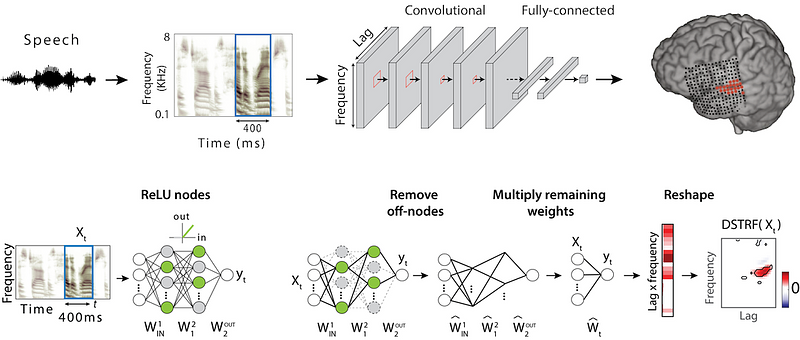
A python toolbox for dynamic spectrotemporal receptive field (dSTRF) analysis, as introduced in Keshishian et al (2020). In short, dSTRF is a method to analyze which parts of the input at any time point are being used by a feed-forward deep neural network to predict the response.
In mathematical terms, for a nonlinear model \(f(\cdot)\), input at time \(t\), \(X_t\), and output at time \(t\), \(Y_t = f(X_t)\), the dSTRF is the locally linear transformation \(W_t\), such that: \(Y_t = W_t X_t\). Now, if \(f(\cdot)\) is a linear function, \(W_t\) will be the same for all \(t\). If not, the linearized function applied to the input (\(W_t\)) will depend on the given stimulus (\(X_t\)), which is the case in a deep neural network.
A linear function mapping the auditory stimuli in the spectrotemporal domain (i.e., auditory spectrograms) to the neural activity recorded from the biological brain is called a spectrotemporal receptive field (STRF). Since we use a nonlinear mapping between the stimulus and response, and characterize it as a locally linear function at each time point, we call this a dynamic spectrotemporal receptive field (dSTRF).
Related publications
Deep neural networks effectively model neural adaptation to changing background noise and suggest nonlinear noise filtering methods in auditory cortex. NeuroImage (2023)
Estimating and interpreting nonlinear receptive field of sensory neural responses with deep neural network models. eLife (2020)